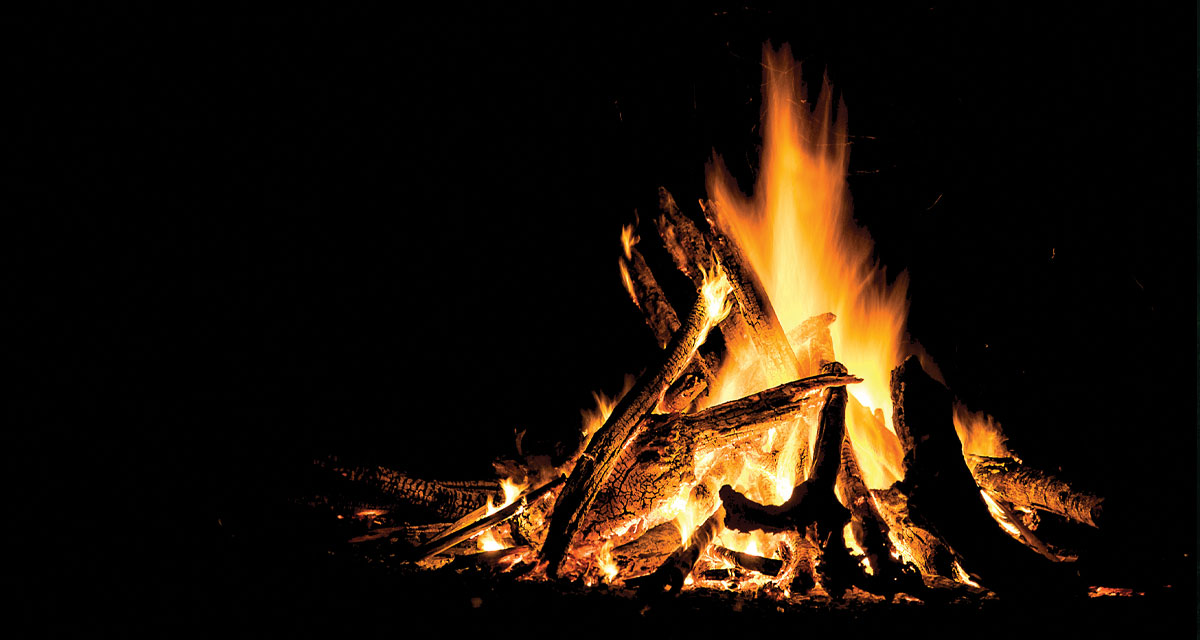“Nearly every culture on every continent, from Tasmania to South America to Ancient Greece, attributed their existence to fire,” ~ Scottish anthropologist, James Frazer
Five thousand years ago in the Italian Alps, a man equipped with a quiver of arrows, a knife, an axe, and a fire-making kit walked until he succumbed to his injuries and fell in the snow. In 1991, anthropologists and scientists received the perfectly preserved “iceman” to study. The most fascinating item he possessed was a tinder kit, comprising of highly flammable fungus, flakes of pyrite, and embers wrapped in maple leaves, all stored in a birchbark cylinder. No matter the plight or location, the people of that day had the technology to produce fire. Today, we are equally mesmerized by creating and maintaining a well-stoked blaze, whether it’s intended to heat the home or cook a meal! Fire continues to be essential in our lives.
The Perfect Match
Fortunately, the days of unstable combustible matches that produced harmful fumes are long gone. While the tip still mixes red phosphorous and potassium chlorate, the wooden stem contains a fire-retardant element to ease the rate of burning.
Tip: Make your own waterproof matches by dipping strike-anywhere match sticks into a thin coating of melted beeswax!
Building a Fire
When a flame reaches a fuel source, such as pine needles, kindling, or paper, it takes time to dry out the material and produces mostly smoke. The greater the source, the faster the material reaches the maximum heat needed to combust into growing hot flames. One basic model is the “fire triangle,” which includes oxygen, heat, and fuel. But tossing a lit match onto tinder and witnessing it burn out illustrates the frustration in balancing appropriate amounts of all three.
Tap into your inner caveman or woman!
- Collect tinder, such as dead grasses, fallen pinecones, leaves, cattail fluff, dandelion seeds, and newspaper. Conifer needles directly from the node will contain a sticky-sap substance to enhance your fire!
- Gather pencil-sized sticks and sticks the diameter of a quarter. (Resin-soaked sticks called “fatwood” are a convenient pre-made source of kindling.)
- Use only dried wood of varying sizes, gradually working up to large logs.
Twenty twigs have more surface area than one big log; therefore, the smaller bundle has a greater chance of igniting; so, organize sticks in the formation of a teepee, a log cabin, or pyramid. Each method allows oxygen to enter from underneath and produce an even flame at a point or in a square.
Fire Starters: Coat a cotton ball in Vaseline, ball-up dryer lint, or add vegetable oil to a Frito corn chip!
Cooking Tools
For two million years, humans have cooked animal flesh and vegetables over an open flame. The evolutionary connection between fire, cooking, and eating continues to excite the palate in anticipation of a steaming, hot meal. Cast-iron cookware easily withstands the heat of flames or when food is placed on, or in, a hot layer of oil. Great recipes are found online and in books.
- Aluminum foil, enveloping corn-on-the-cob or meat, potatoes and vegetables, is ideal for a convenient cooking option. Buried deep in the coals, a baked potato needs 30 to 40 minutes. Fish, only five minutes, for a small catch.
- A roasting spit is a primal method. Prepare a rod at least three times the length of the animal. “Y-shaped” sturdy branches or metal can serve as the crook. You’ll need a drip pan, great for sauces and marinades with a pinch of seasoning and a few tablespoons of wine.
- Dinner on a stick continues to be a favorite cooking style. Whether it’s kabobs, hotdogs, or marshmallows, the technology is simple, fast, and fun!
The Eternal Flame
Stars overhead. The sound of crackling wood. Sparks. A drink in hand, and a plate containing the remnants of sauces, a napkin, and fork. The mere pleasure of sitting around a campfire creates a powerful calming effect, including lessening levels of anxiety. It’s an innately satisfying experience. Woven into our DNA is a message that acknowledges a feeling of safety, warmth, and the ability to sustain our lives when near the dancing flames. Its art is our past, our present, and our future!



















